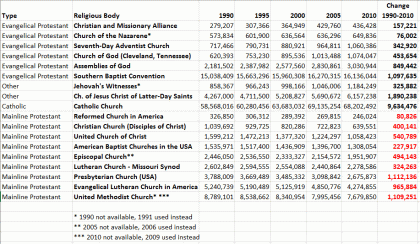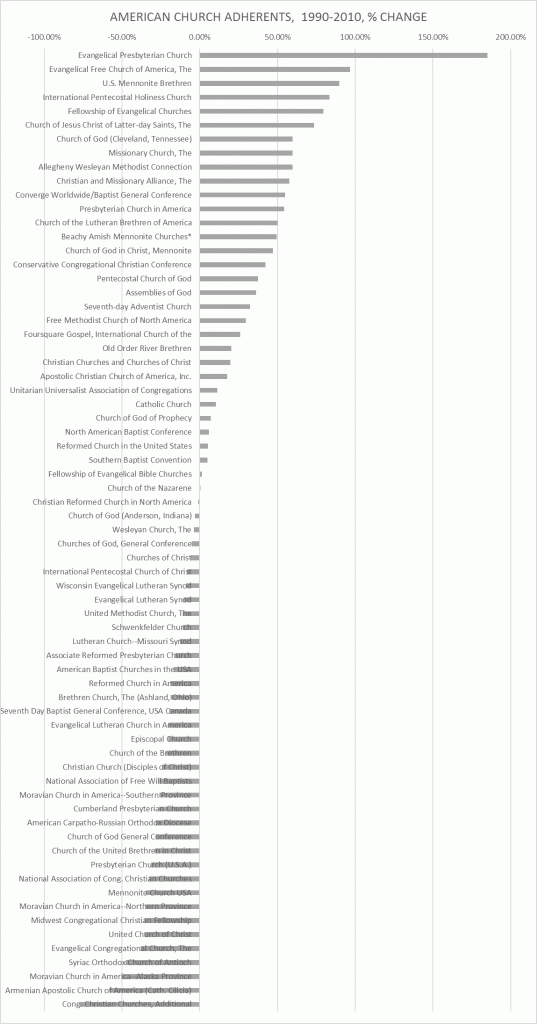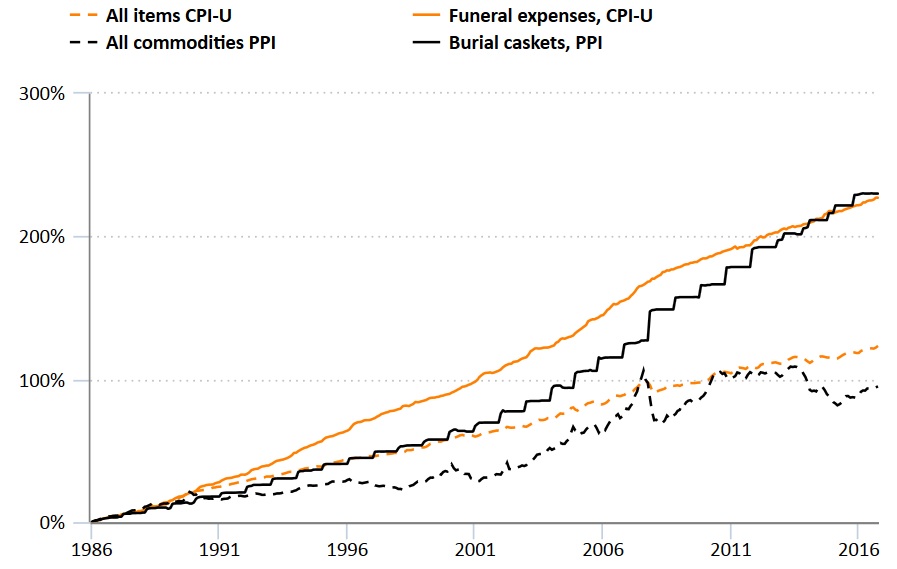Among American religious groups, Protestants comprise the largest, with 49% of the adult population, compared to Catholics with 23%, according to the latest Gallup poll conducted in December, 2017.1
Within the Protestant community, the fastest-growing group, by far, are “non-denominational” churches, which the Pew Religious Landscape Study of 2014 estimated as including from 4.9% to 6.5% of the U.S. population, depending on how you define the data.2 The largest Protestant denomination was the Southern Baptist Convention with 5.3% of the population, making “non-denominational” Protestant churches the de facto largest or second-largest denomination.
Data from the General Social Survey revealed that from the 1970s through 2014, the number of non-denominational Protestants grew at a much faster pace than any of the denominations—more than 400% over a forty-year period, shown in the following graph:3



